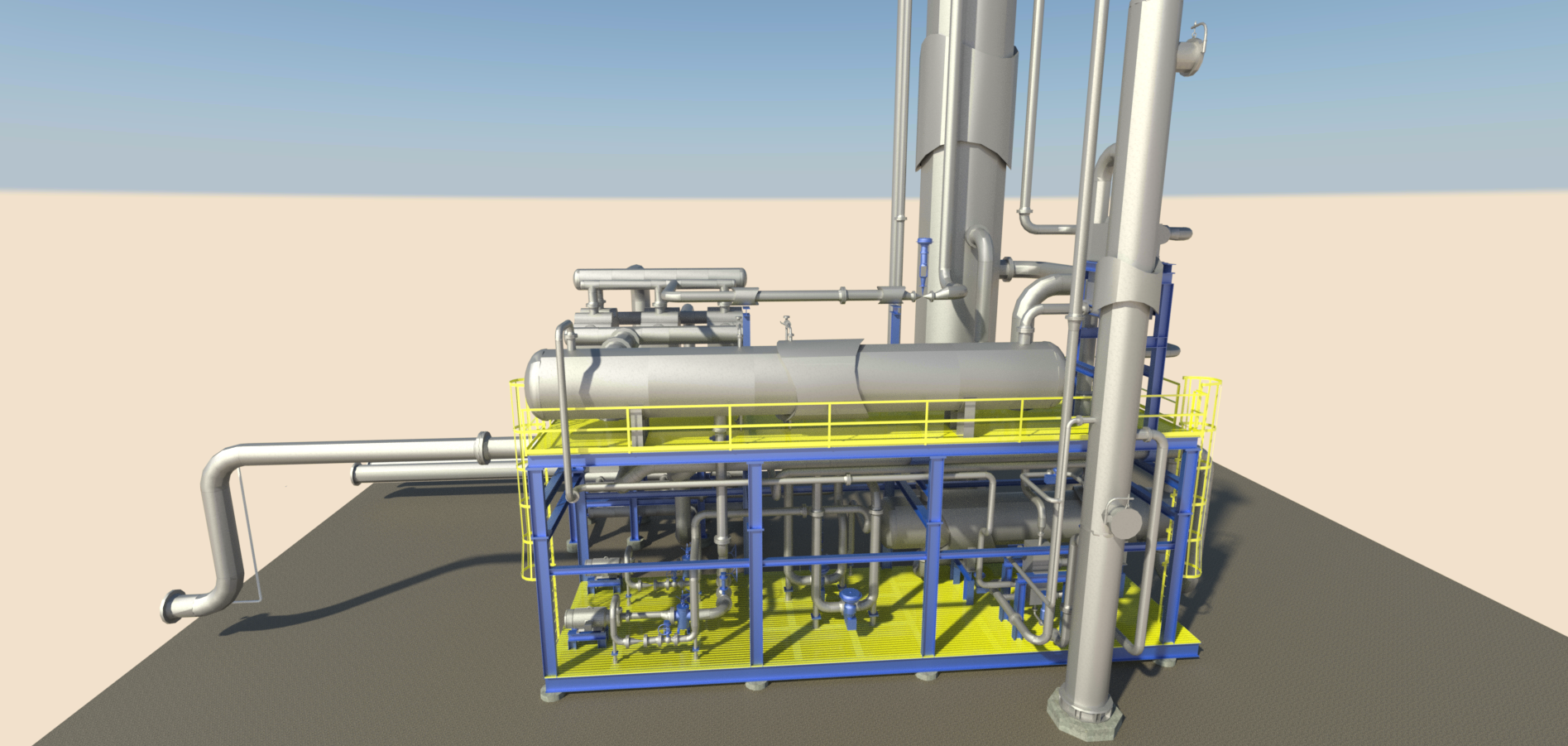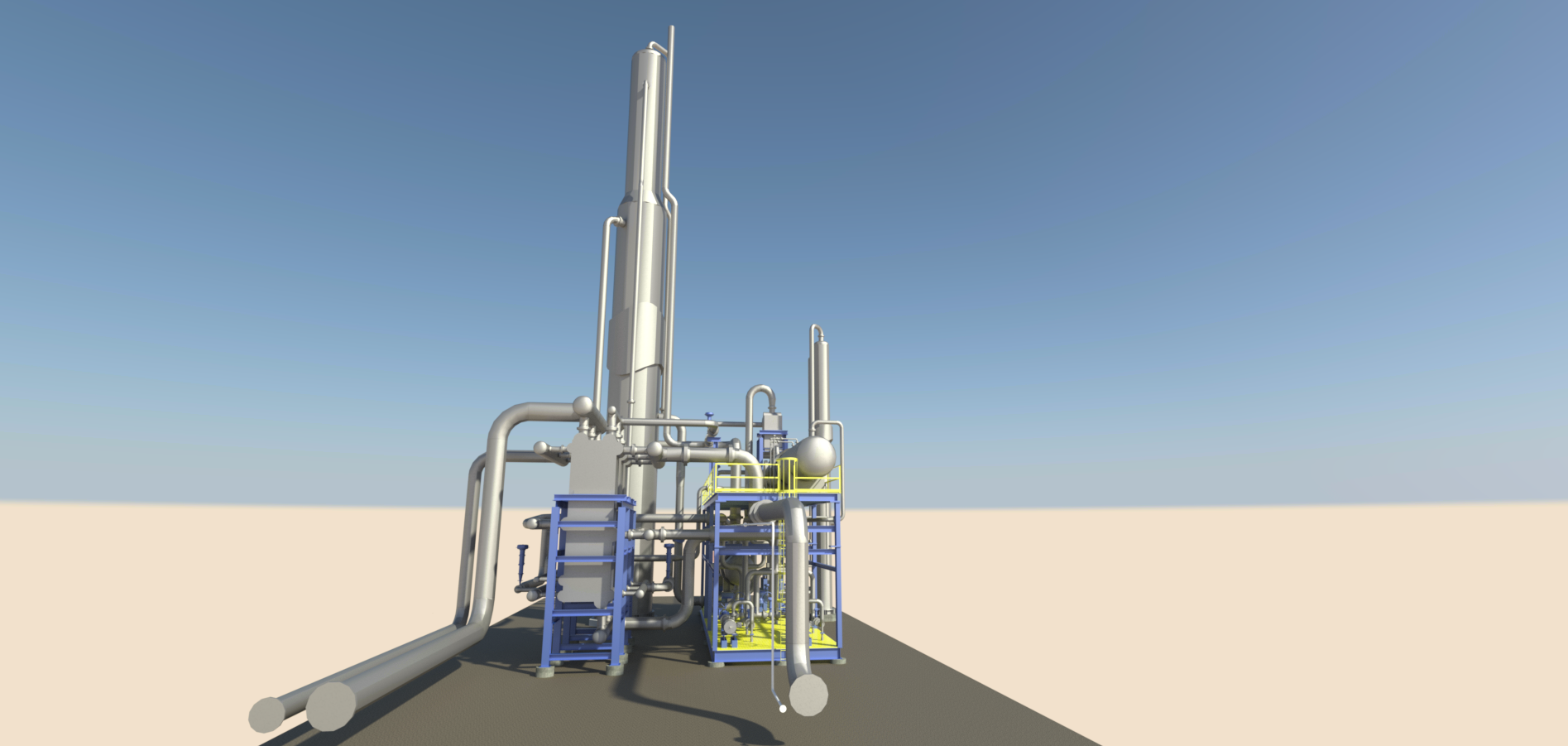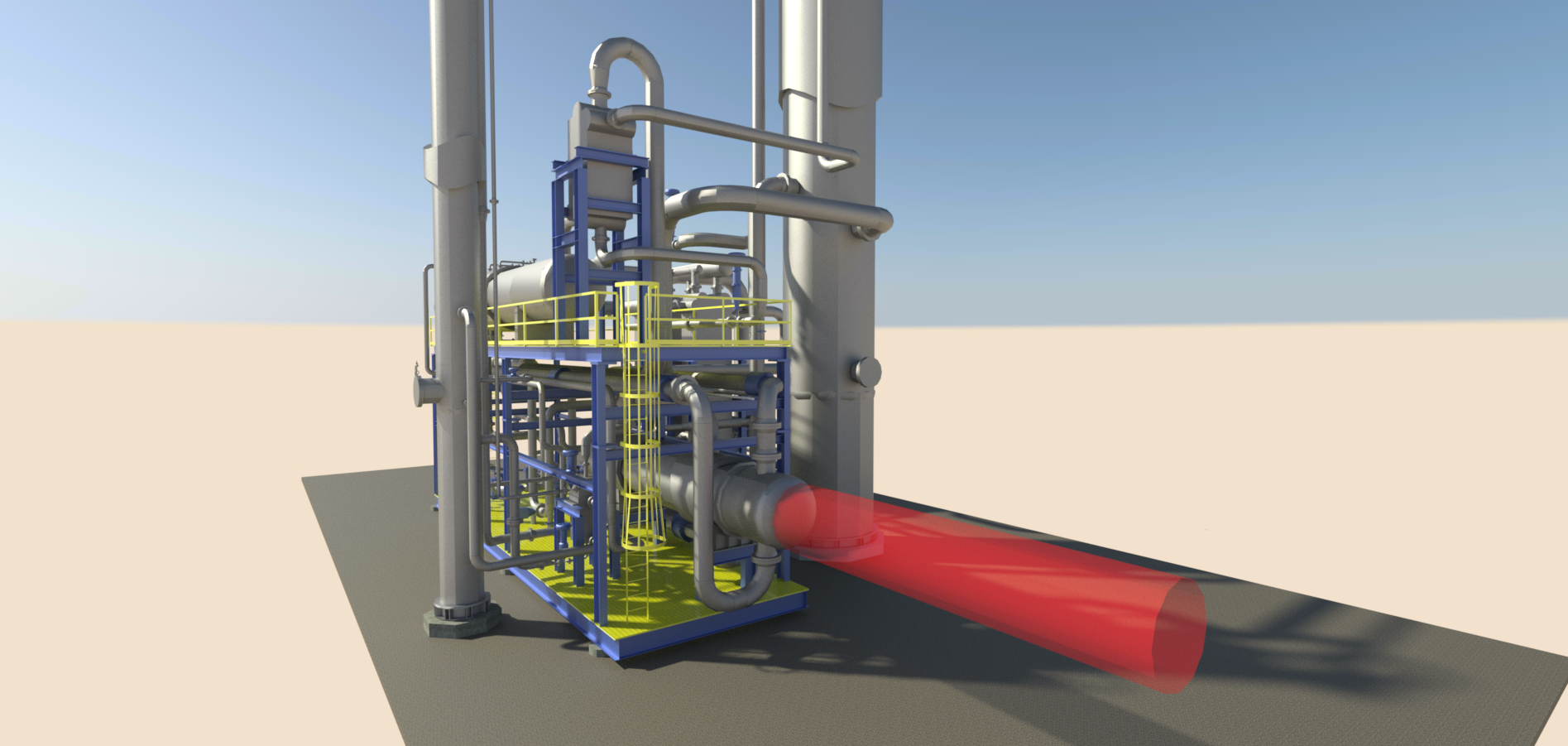Improving Midstream Efficiency Through Innovative Two-Column Design
Company Overview:
Our client is a midstream operator managing over 400 MMSCFD (Million Standard Cubic Feet per Day) of gas. The gas contains a Nitrogen concentration ranging between .0-5.0 mol%, which exceeds the pipeline specification of less than 3.0 mol% of inert components.
The Challenge:
The company faced the critical challenge of reducing the inert component content, nitrogen in this case, in the gas stream to less than 3.0 mol%, in the combined treated sales gas stream. This reduction was essential to meet the operational and regulatory standards. The specific problem statement included:
- Target Design Rate: Design a unit to handle a portion of the total feed gas available, 180-220 MMSCFD, and reduce the nitrogen as much as possible to minimize the capital cost of the project.
- Design Alternatives. Develop two design options, single and two-column, to quantify the difference in the performance.
- Low Inlet Pressure: Required feed gas compression to address the low inlet pressure.
- Reduction of N2: Aimed to reduce the Nitrogen content down to 0.5 mol% to achieve a combined inert components content of less than 3.0%.
- Methane Specifications: Design the unit to ensure that the methane content in the vent stream to be less than 1.0 mol%.
- Turndown Capacity: Requires a turndown of 40% of the design rate.
The Solution:
To address these challenges, the company explored two design options—a single-column and a two-column design. Here’s how the problem was approached and ultimately solved:
Simulation & Analysis
- Single-Column vs. Two-Column Design:
- The single-column design required approximately 31,200 horsepower (HP).
- The two-column design was significantly more efficient, requiring only about 18,200 HP.
- Performance Metrics:
- Both designs achieved the target of 0.5 mol% Nitrogen in the sales gas.
- Both achieve a methane concentration in the vent below 1.0 mol%.
- Design Capacity:
- The selected, or two-column, design was rated to handle up to 5.0 mol% Nitrogen in the feed gas.
- The two-column design is confirmed to be more effective for Nitrogen concentrations of 25% or less.
Implementation
The company decided to implement the two-column design based on the performance results. The key reasons included:
- Efficiency: The two-column design requires substantially less horsepower, making it more energy-efficient.
- Performance: It met all the specified performance criteria, including Nitrogen and Methane specifications in the product streams.
- Flexibility: The design provides flexibility in the feed gas composition, ensuring reliable operation even at higher Nitrogen concentrations.
The Results:
By adopting the two-column design, the company successfully:
- Reduces the Nitrogen content in the gas to 0.5 mol% or less, with a blended full sales gas content of less than 3.0%.
- Maintains the Methane content in the vent at less than 1.0 mol%.
- Achieves operational efficiency with lower horsepower requirements.
- Ensures flexibility and reliability in handling feed gas with up to 5.0 mol% Nitrogen.
This case study exemplifies how targeted design and simulation as well as the implementation of a two-column design can help midstream operators overcome significant operational challenges, improving efficiency and meeting stringent performance criteria. For more information on how we can tailor solutions to meet your specific needs, contact us.
Plan an introduction meeting today
Contact our experts today to discover how our innovative solutions can tackle your complex energy challenges



